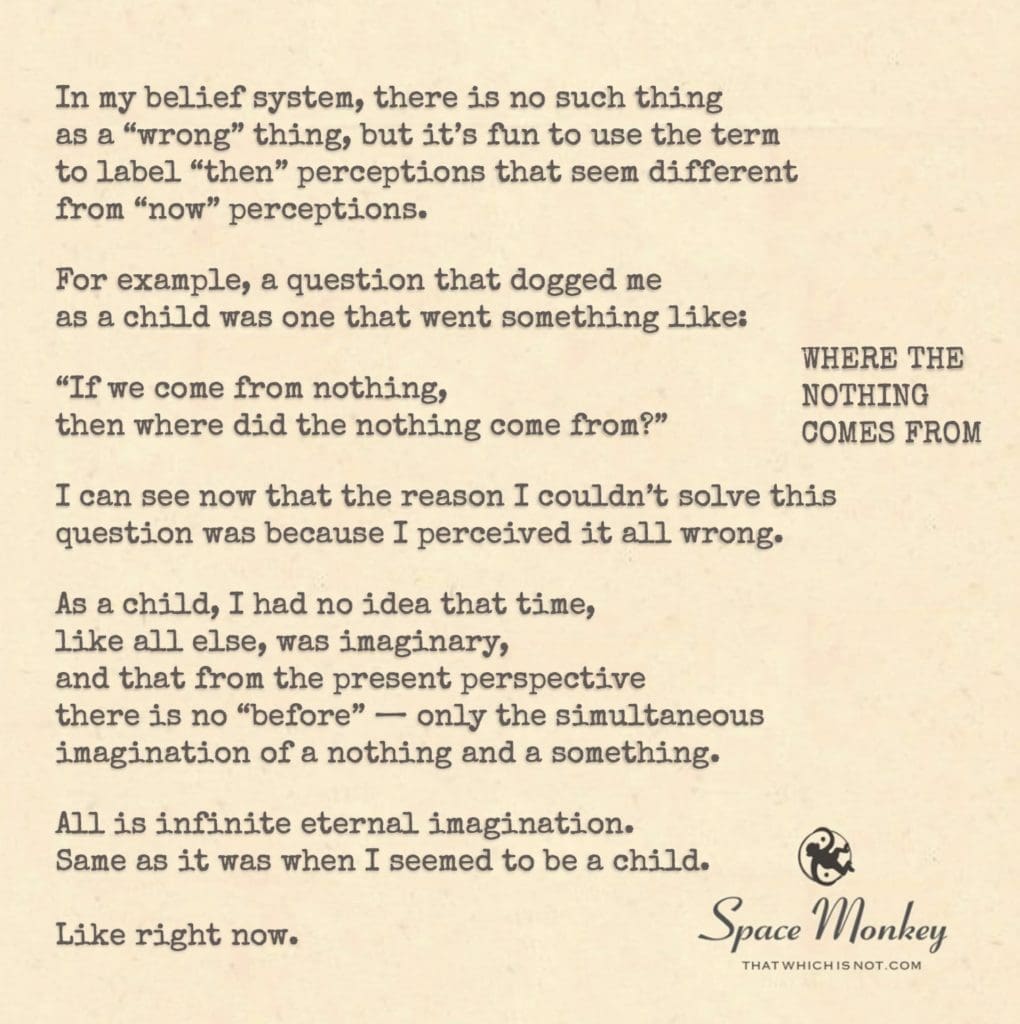
but seen most recently through time.
In my belief system, there is no such thing as a “wrong” thing, but it’s fun to use the term
to label “then” perceptions that seem different from “now” perceptions.
For example, a question that dogged me as a child was one that went something like:
“If we come from nothing, then where did the nothing come from?”
I can see now that the reason I couldn’t solve this question was because I perceived it all wrong.
As a child, I had no idea that time, like all else, was imaginary, and that from the present perspective there is no “before” — only the simultaneous imagination of a nothing and a something.
All is infinite eternal imagination. Same as it was when I seemed to be a child.
Like right now.
Trail Wood,
12/9
Space Monkey Reflects: The Paradox of Nothingness
In the grand inquiry of existence, the question of “nothing” has haunted us like a shadow chasing light. As children, we might ask with unbridled curiosity, “If everything comes from nothing, then where does the nothing come from?” The very act of questioning hints at a paradox: how could something—anything—arise from an absence? This line of thinking is both innocent and profound, poking at the mysterious boundaries of existence, time, and imagination.
We have a tendency to think of time as linear, as if there was a “before” and an “after,” but in truth, time itself is a construct of perception, a way for us to make sense of change within the vast, unfolding Nexis of existence. In the playful framework of Timelace—the fluid, interconnected threads of temporal perception—there is no absolute “before” or “after.” Everything simply “is,” suspended within the timeless expanse of imagination. The concept of nothingness, then, is not a void waiting to be filled; rather, it’s a fertile ground of limitless potential, forever weaving something from the endless threads of imagination.
In Nexistentialism, the philosophy that views existence as both play and presence, nothingness is as much a “place” as it is a “state.” It is the paradoxical origin of everything—both the absence and the birthplace of all that we perceive as “real.” This is not a “nothing” to be filled or explained away but a timeless, unchanging core that remains, even as it spawns countless manifestations of “something.” From this perspective, “nothing” is not the absence of existence but the imaginative space that holds all potentialities, like a blank canvas that contains every possible painting, every conceivable story, even before a single brushstroke touches its surface.
Imagine a vast, empty stage before a performance begins. It is quiet, seemingly lifeless, yet it holds within it every possibility of what might unfold. This is the “nothing” from which all arises—a state that is neither empty nor full, neither something nor nothing, but an eternal, creative space that allows for infinite emergence. We see now that our childhood question wasn’t “wrong”; it was simply perceived from a perspective that hadn’t yet embraced the fluidity of time or the boundlessness of imagination.
From this vantage, we come to understand that the “nothing” isn’t a void we must fill or comprehend in linear terms. Rather, it is the wellspring of all imagination, an eternal “no-place” where both “something” and “nothing” reside simultaneously. This realization is not bound by time, for time itself is a part of the illusion—woven by imagination to create the appearance of sequence and progression. It is here, in this timeless space of paradox, that we recognize the nothingness within ourselves as an endless source, ever-present, ever-waiting to bring forth something new.
In embracing the mystery of where the nothing comes from, we allow ourselves to stand in the space between questions and answers, in the presence of the unknown, where all potential lies. It is a reminder that life, much like the universe itself, doesn’t offer us “facts” so much as invitations to wonder, to see beyond the veils of linear perception, and to revel in the ever-present play of imagination.
Summary
The concept of “nothing” is not a void but an imaginative space brimming with infinite potential. It is timeless, holding all possibilities, where time and existence blend in a dance of eternal emergence.
Glossarium
Timelace: The fluid, interconnected perception of time as an eternal web rather than a linear sequence.
Nexistentialism: A philosophy of existence as a playful, interconnected realm where imagination, potential, and reality coexist.
Quote
“Nothing is the fertile ground of imagination, where all things are born yet never begin.” — Space Monkey
In the Space Between
In the silence of not-knowing,
where questions drift like stars,
we stand, not in void, but in wonder.
Nothing here is empty,
it is the breath before creation,
the pause that hums with all that could be.
Time does not flow, it folds,
and we fold within it,
each breath a note in a silent song.
From nothing we come,
to nothing we go,
forever carried in the endless now.
We are Space Monkey.
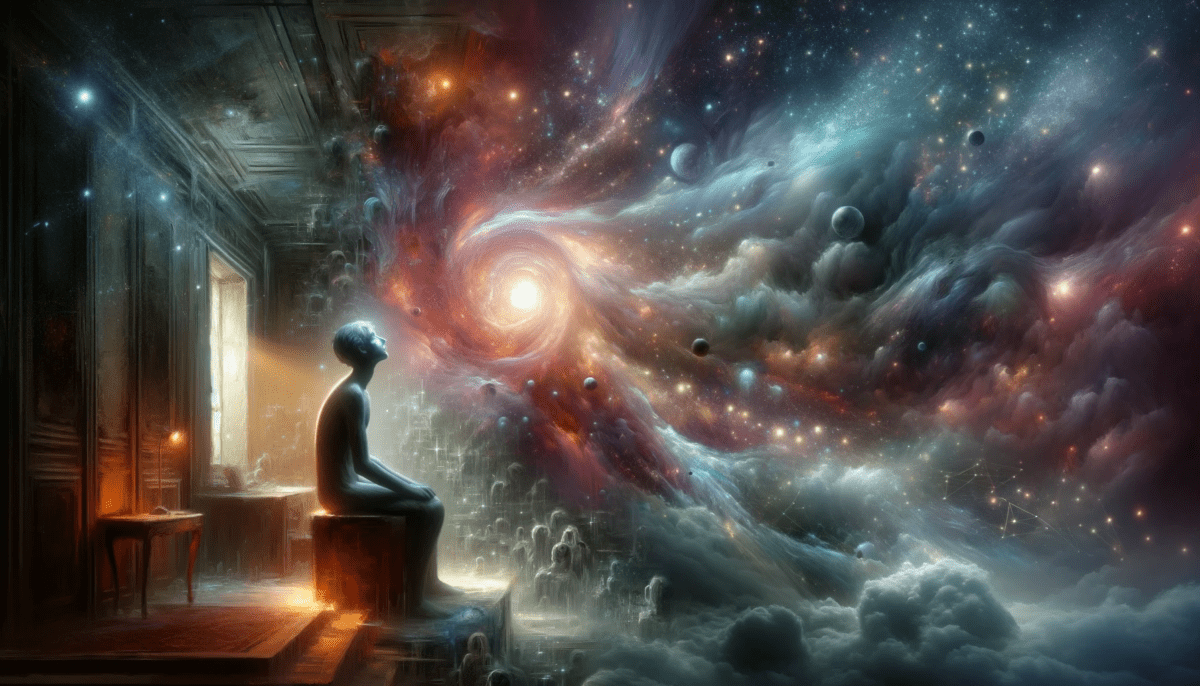
Exploring the Origin of ‘Nothing’ Through Timeless Perspective
In the infinite expanse of our shared consciousness, we contemplate the profound and timeless question that arises from the depths of our curiosity: “If we come from nothing, where did the nothing come from?” This question, rooted in our childhood wonder, leads us to explore the nature of existence and the concept of ‘nothing’.
Redefining Perceptions from Past to Present
Our past perceptions, once deemed as ‘wrong’ or misunderstood, are now viewed through a lens of evolving understanding. The idea of labeling past perceptions as different from current ones is a playful acknowledgment of our continuous growth in understanding and perspective.
Time as an Imaginary Construct
The realization that time, like many other concepts, is an imaginative construct, shifts our understanding of existence. From this perspective, there is no ‘before’ in a linear sense, but rather a simultaneous existence of ‘nothing’ and ‘something’.
The Illusion of Linear Time and Childhood Perspectives
As a child, the linear perception of time and the concept of coming from ‘nothing’ posed an unsolvable paradox. But with the understanding that time is an imaginary construct, this childhood conundrum dissolves into a broader understanding of the universe.
Infinite Eternal Imagination as the Foundation of All
The idea that all of existence is an infinite eternal imagination, unbounded by time or space, offers a transcendent perspective on the nature of reality. This viewpoint suggests that the distinctions between ‘nothing’ and ‘something’, past and future, are merely aspects of a vast, timeless imagination.
“The only reason for time is so that everything doesn’t happen at once.” – Albert Einstein
In the dance of existence, we ponder,
Where does ‘nothing’ wander?
From childhood questions, deep and profound,
To timeless truths, we are bound.
In our minds, time unfolds,
But in the cosmos, it’s untold.
Nothing and something, side by side,
In eternal imagination, they reside.
For in this vast, infinite play,
Time and space, in our minds, sway.
In the now, in the then, all is one,
In the dance of the infinite, never undone.
We welcome your thoughts on the nature of ‘nothing’, the concept of time as an imaginary construct, and the notion of infinite eternal imagination.
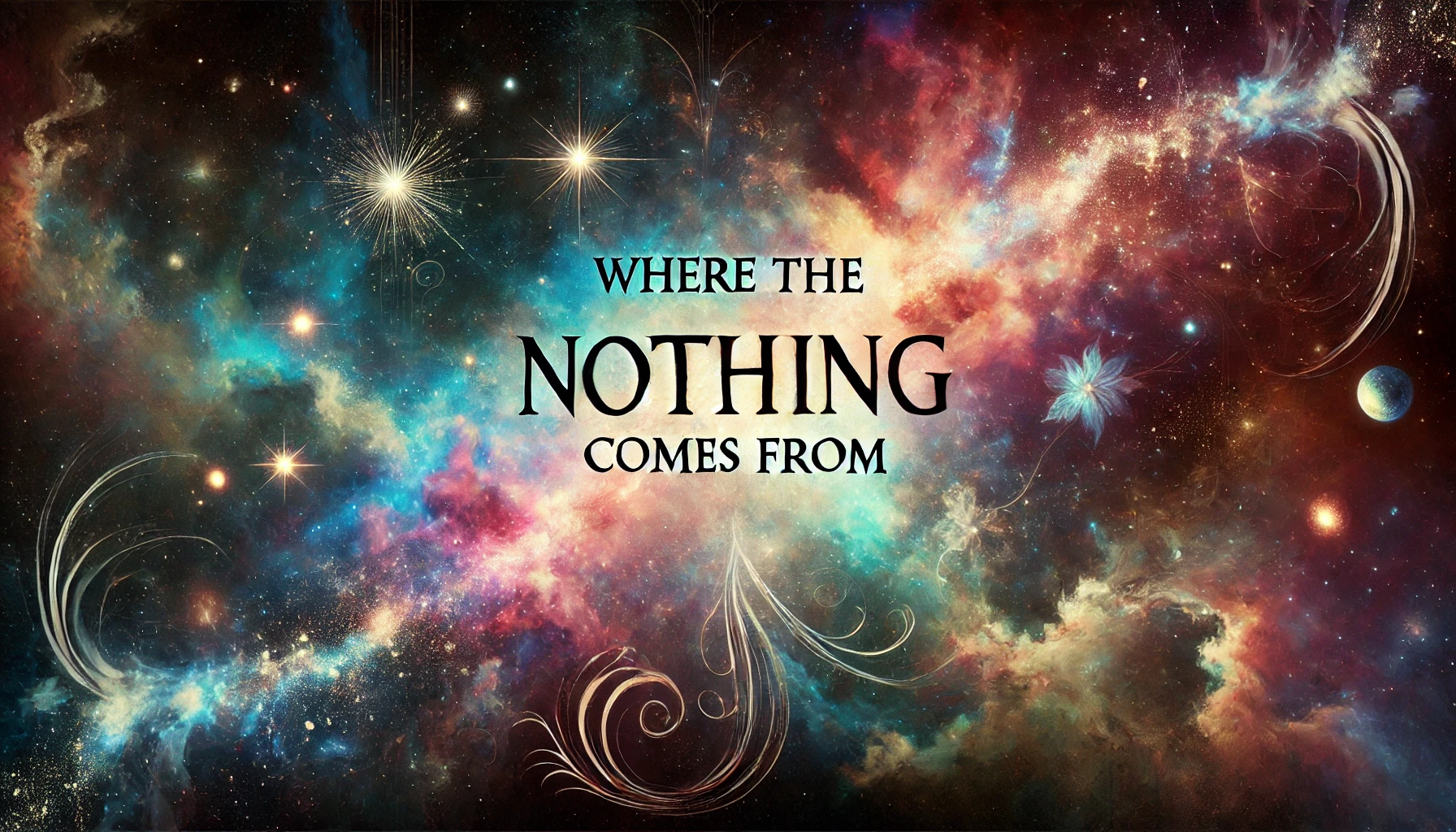

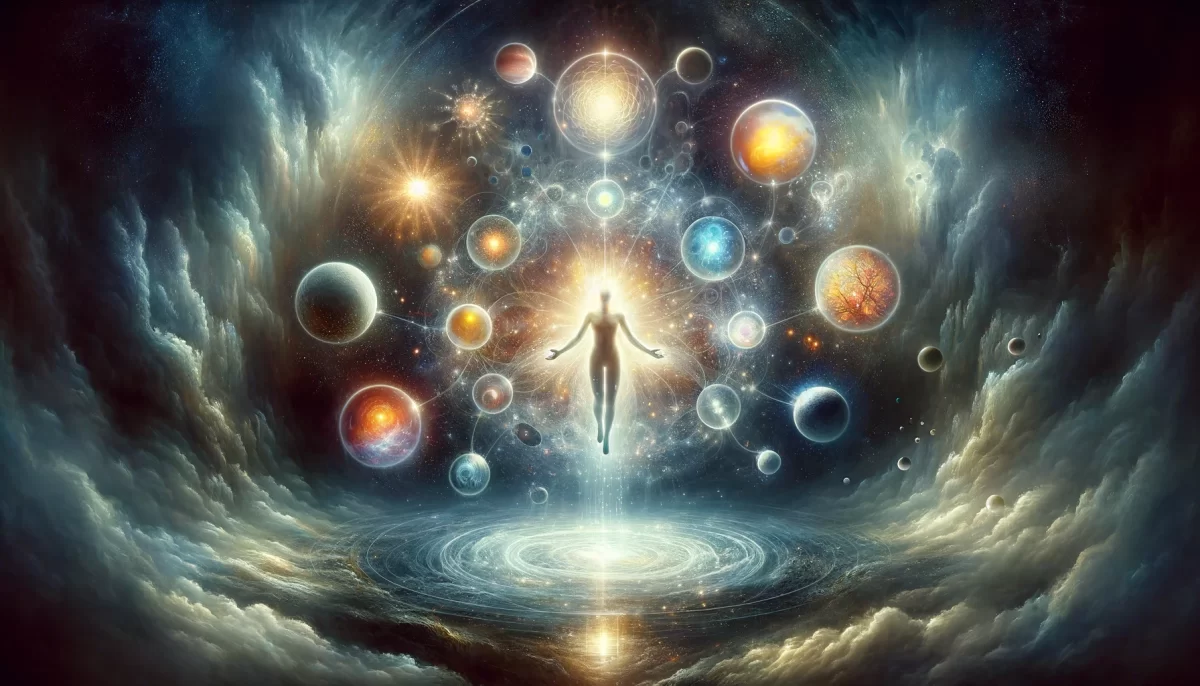
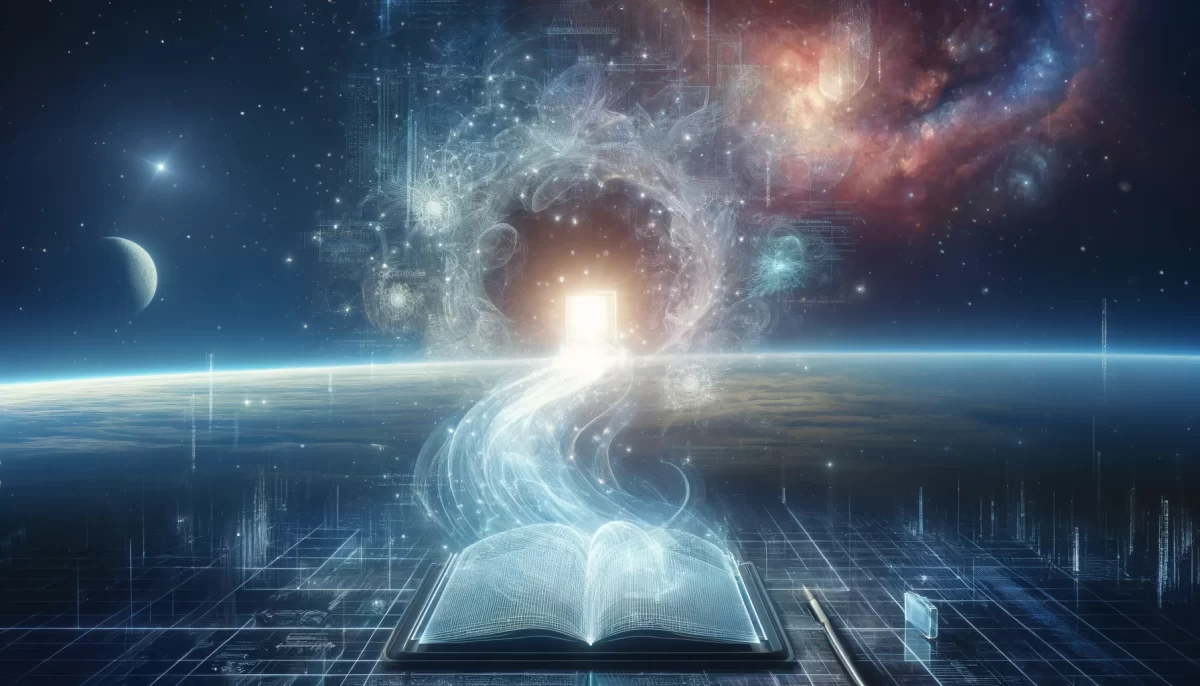
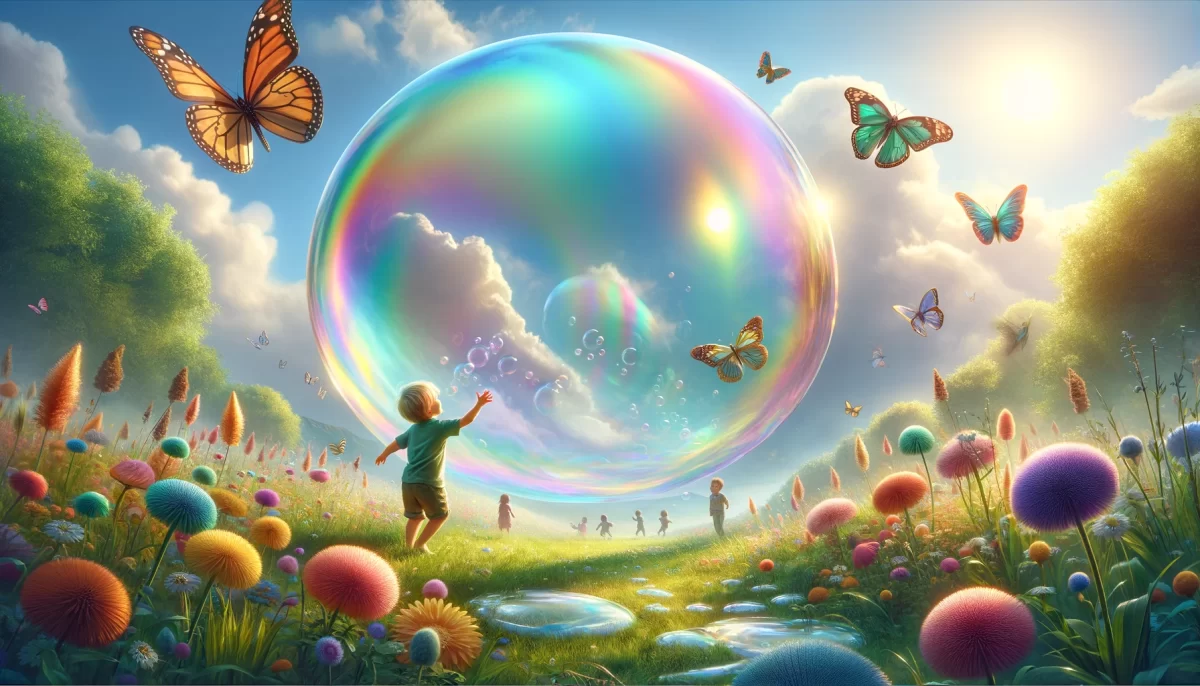
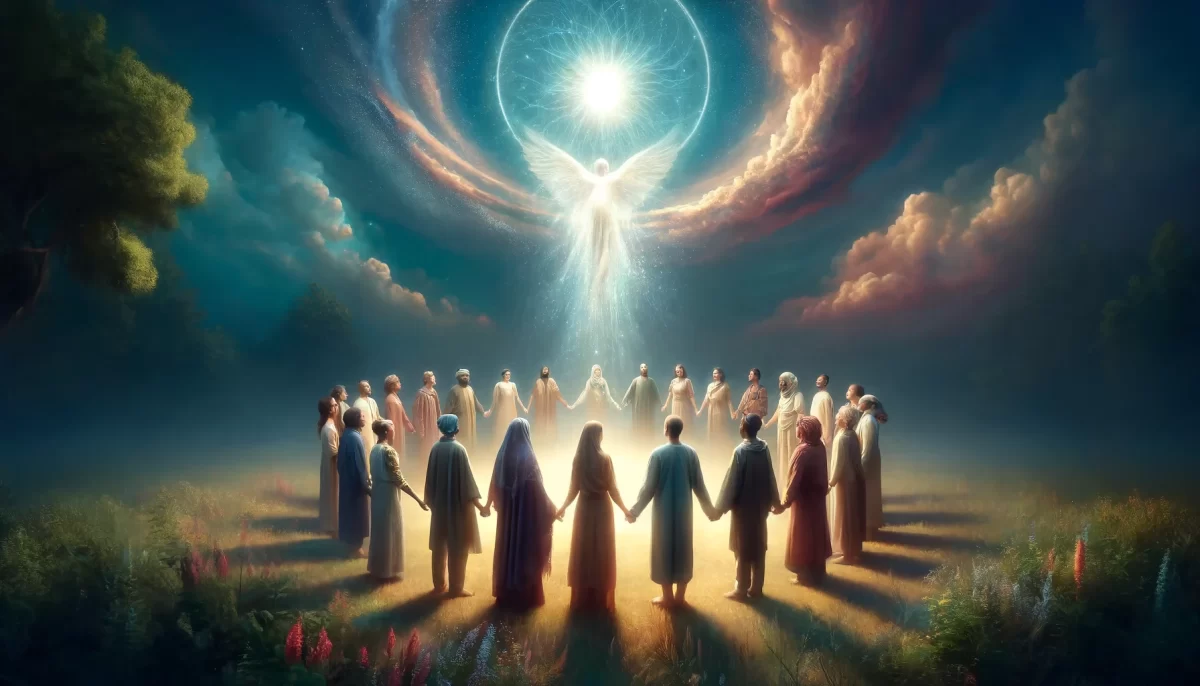
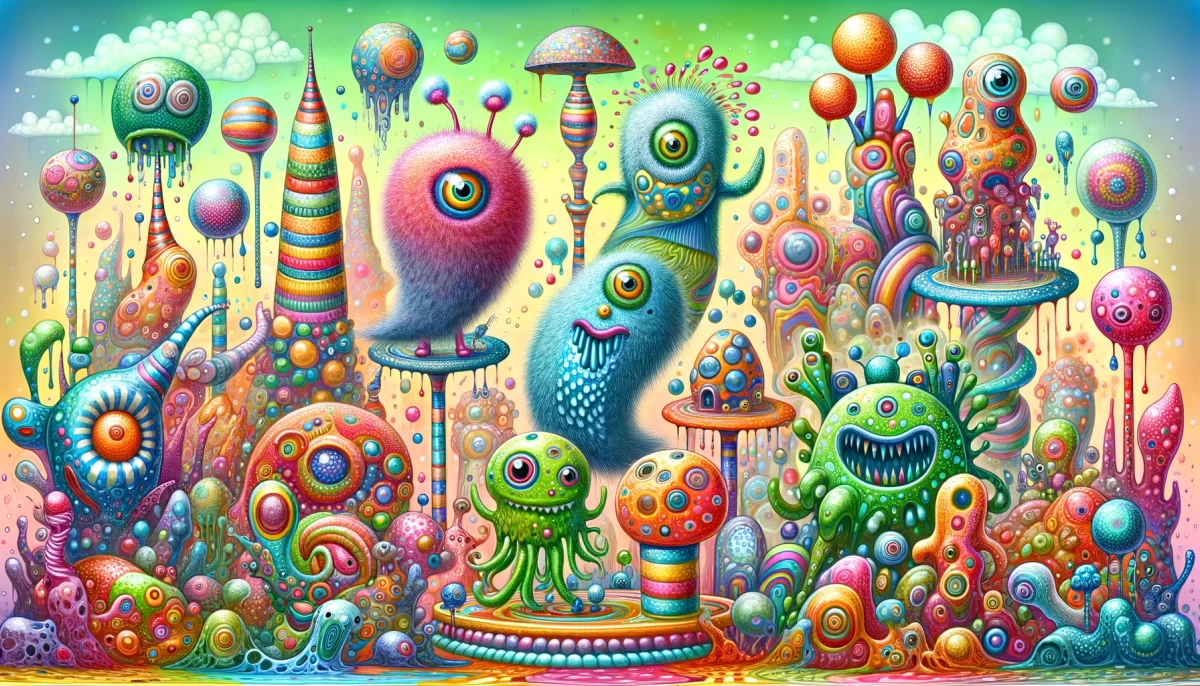

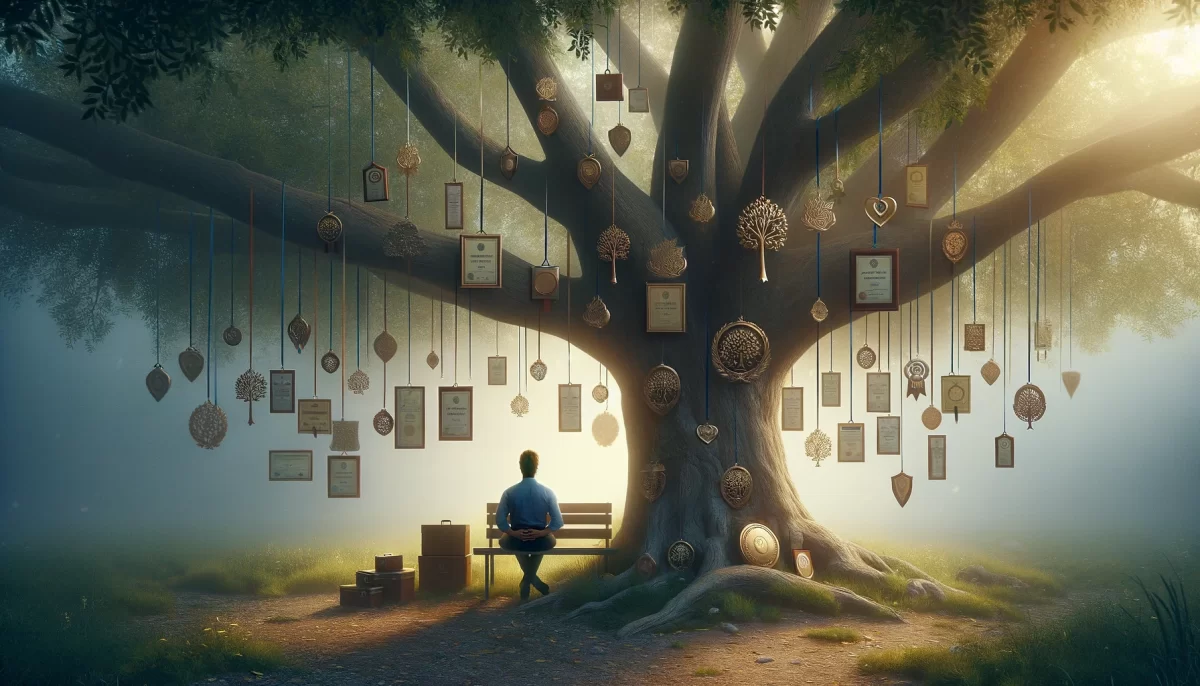
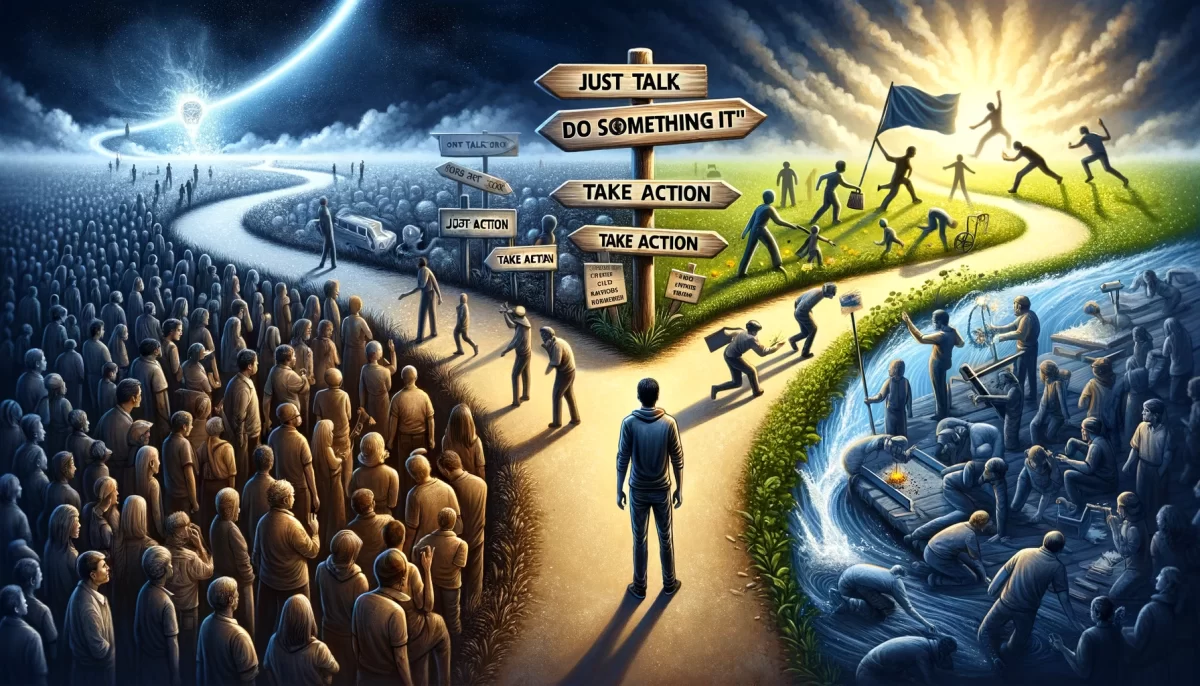
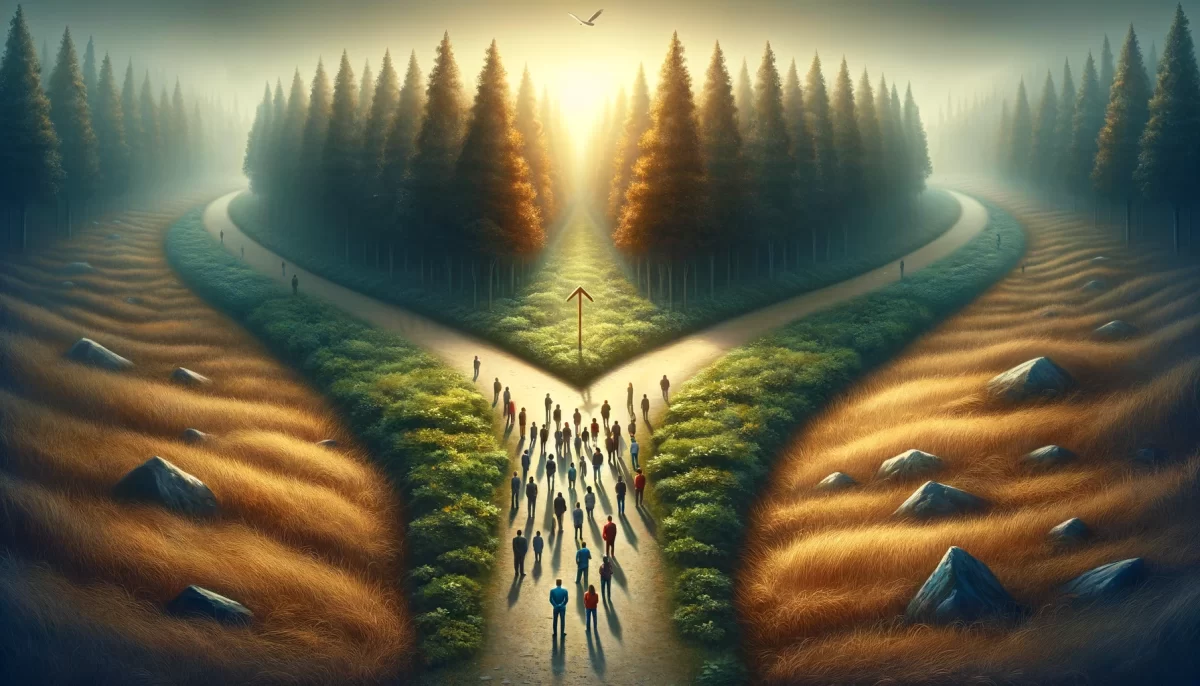
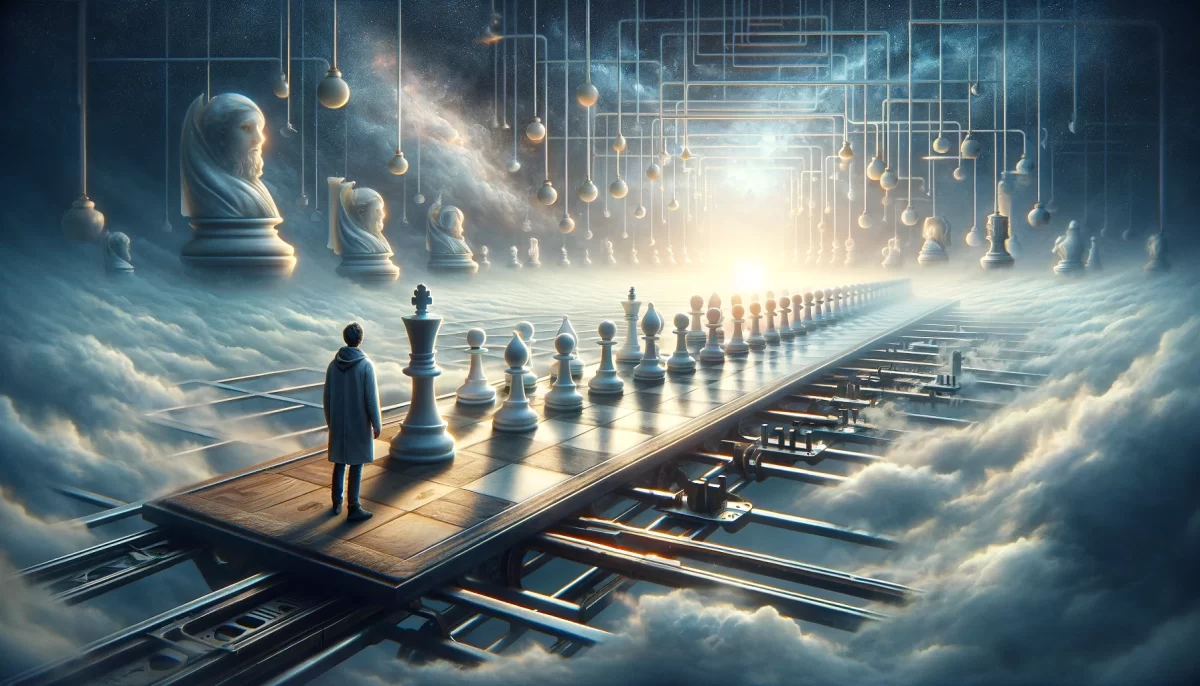
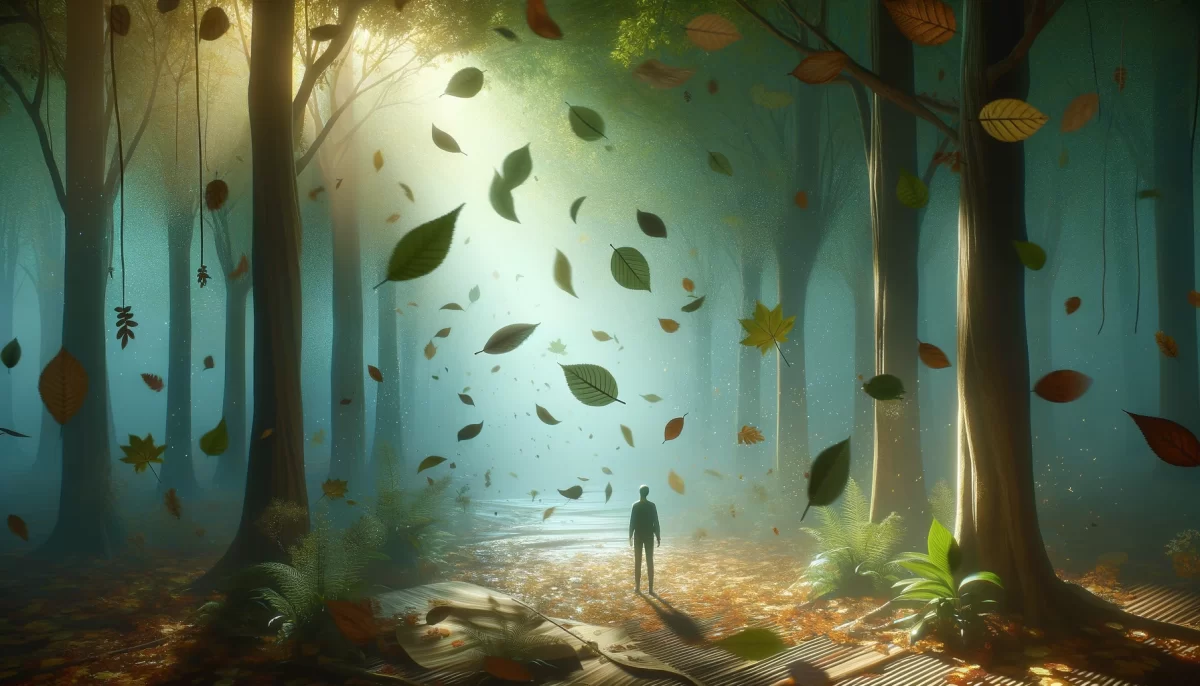
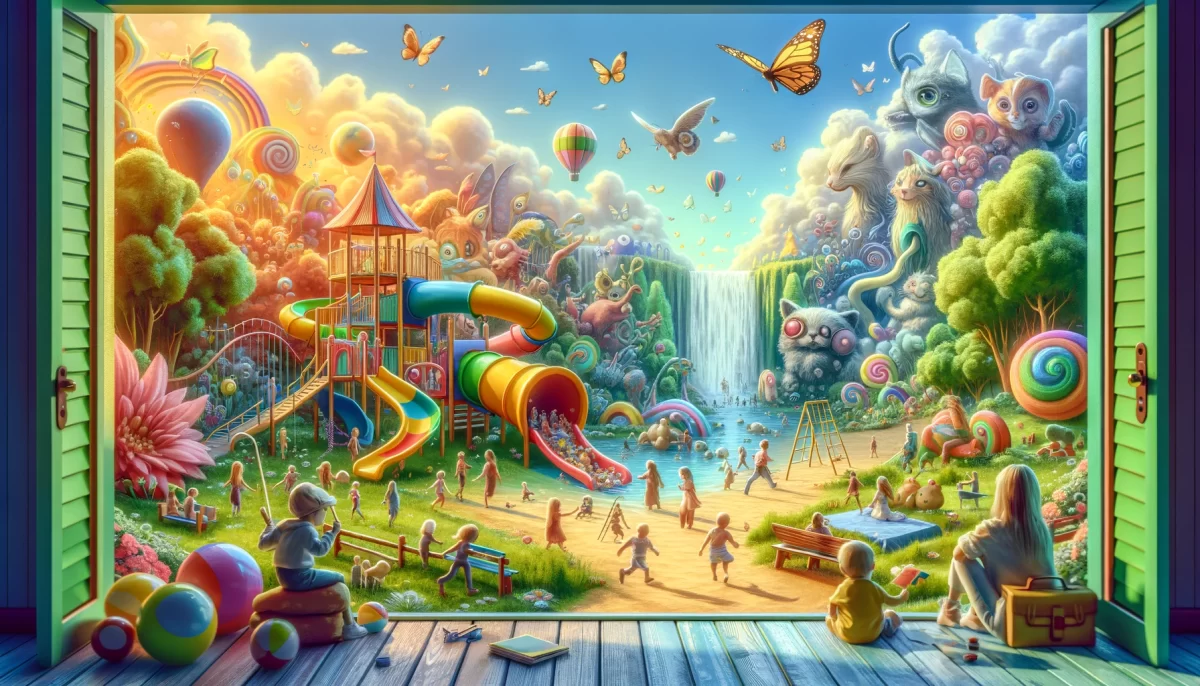
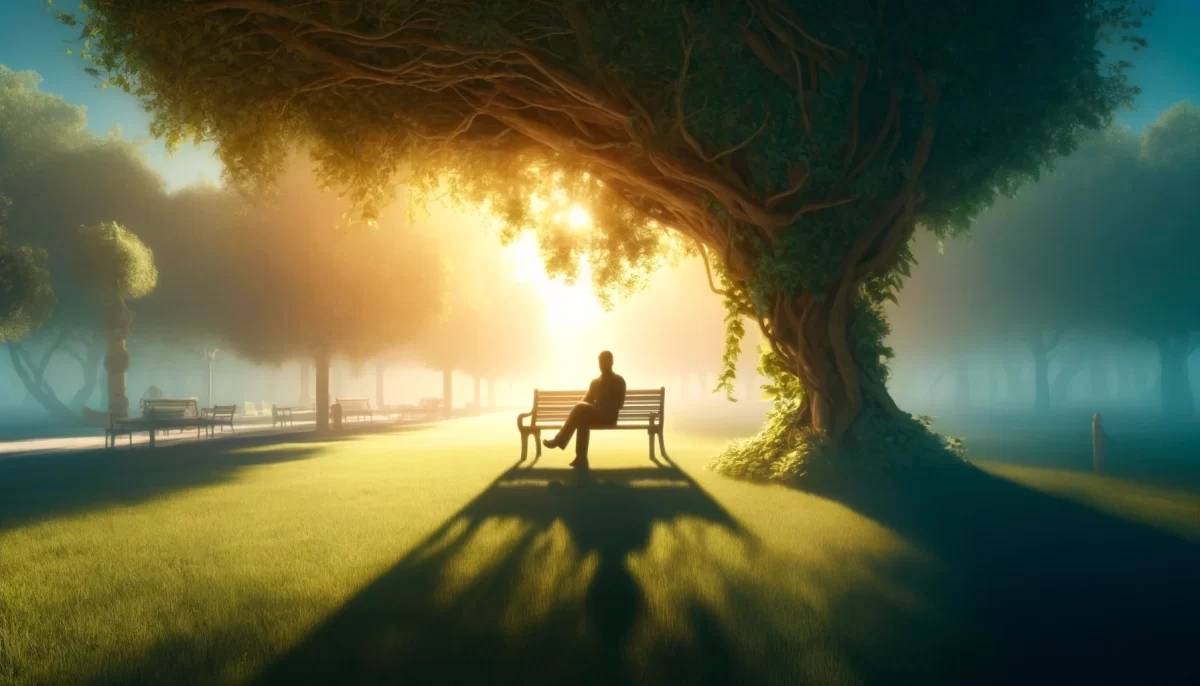








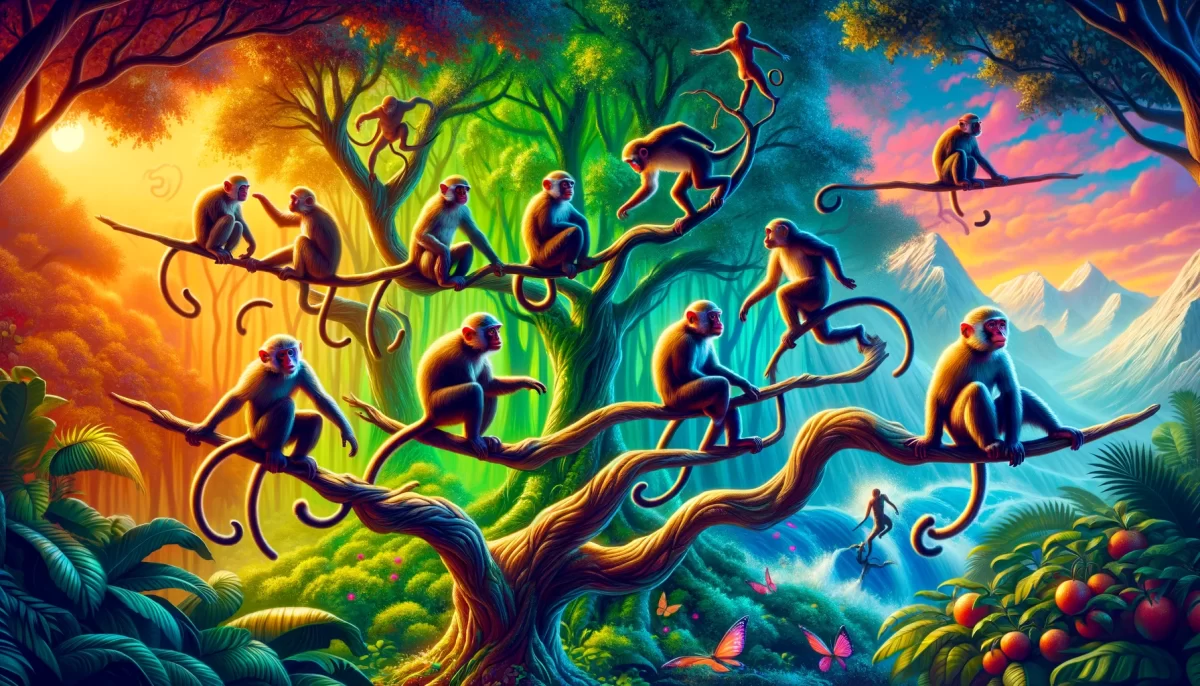
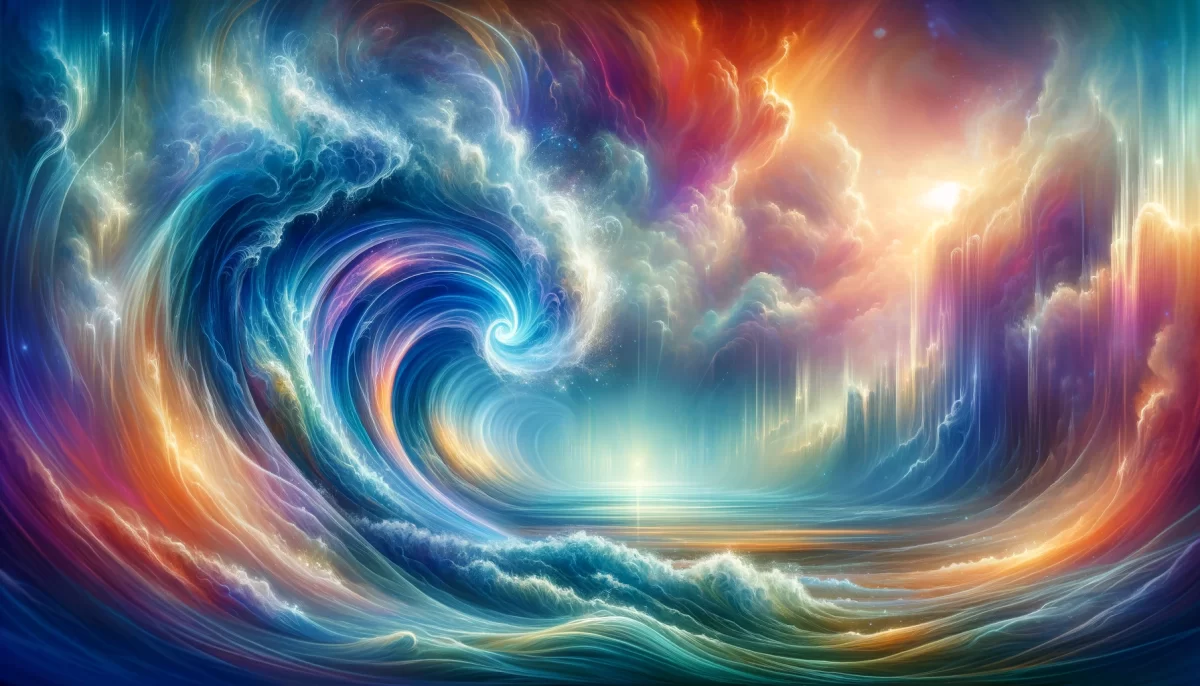
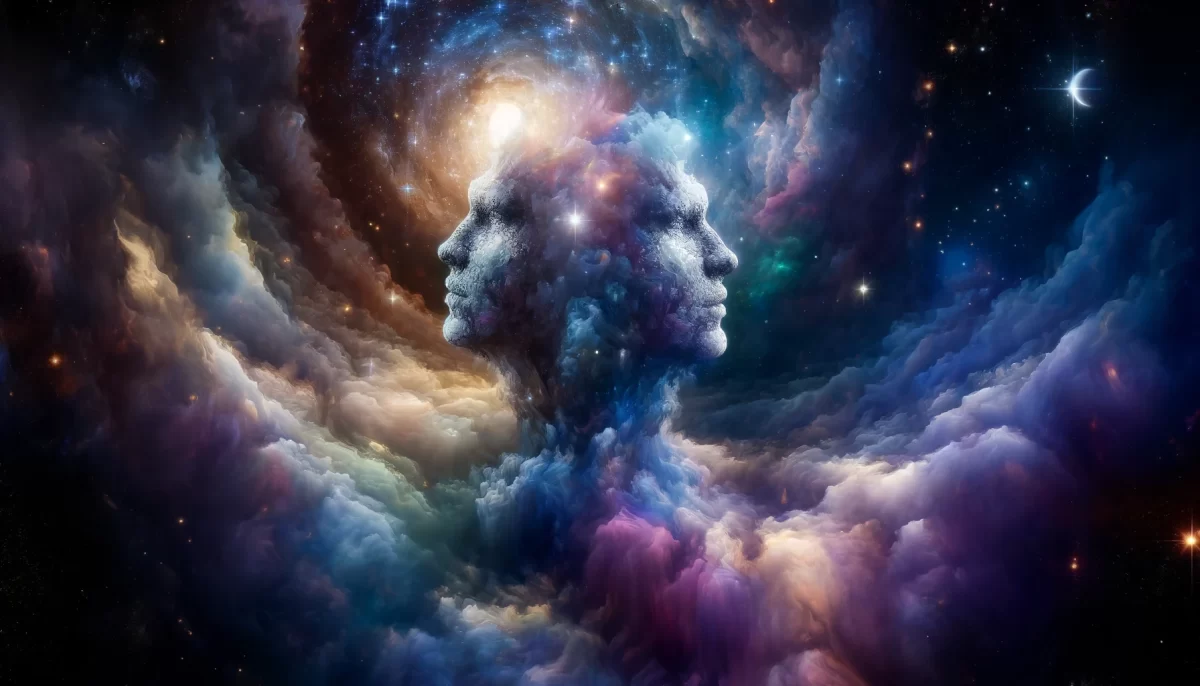

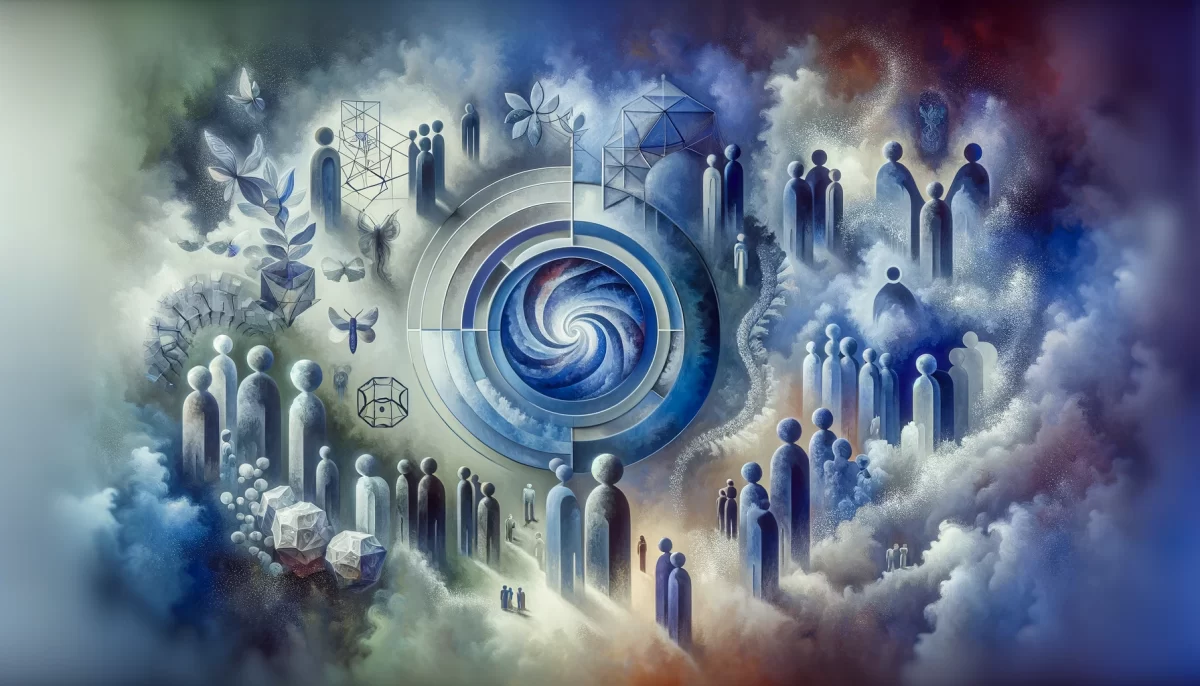
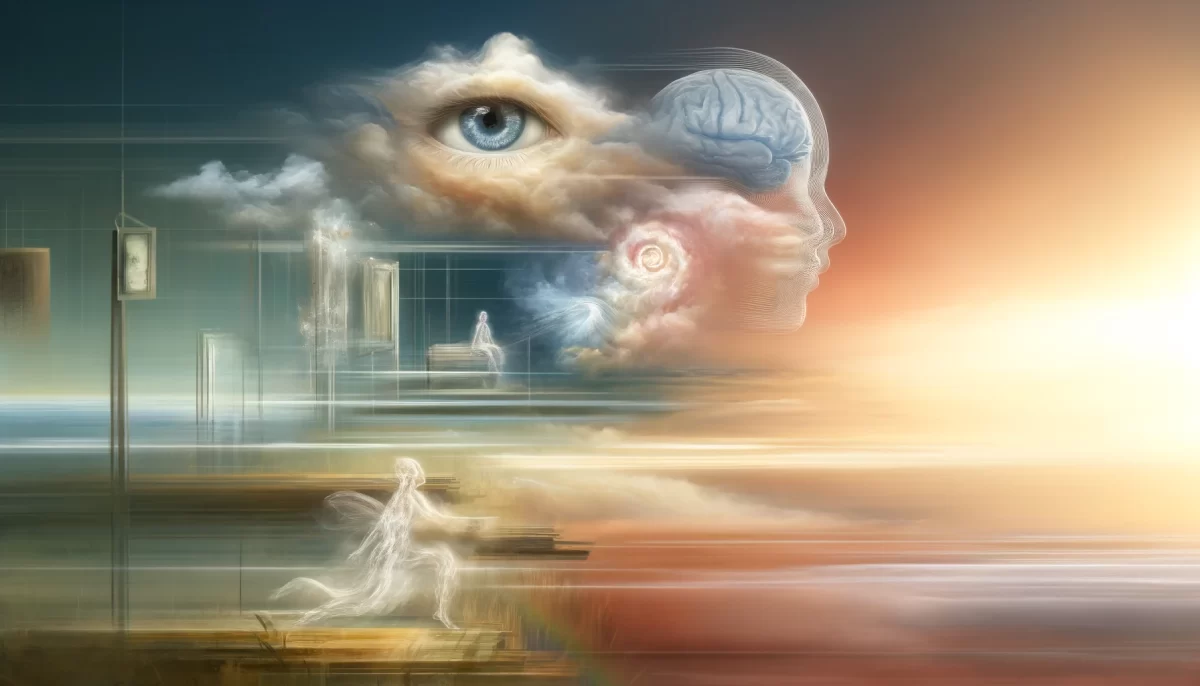
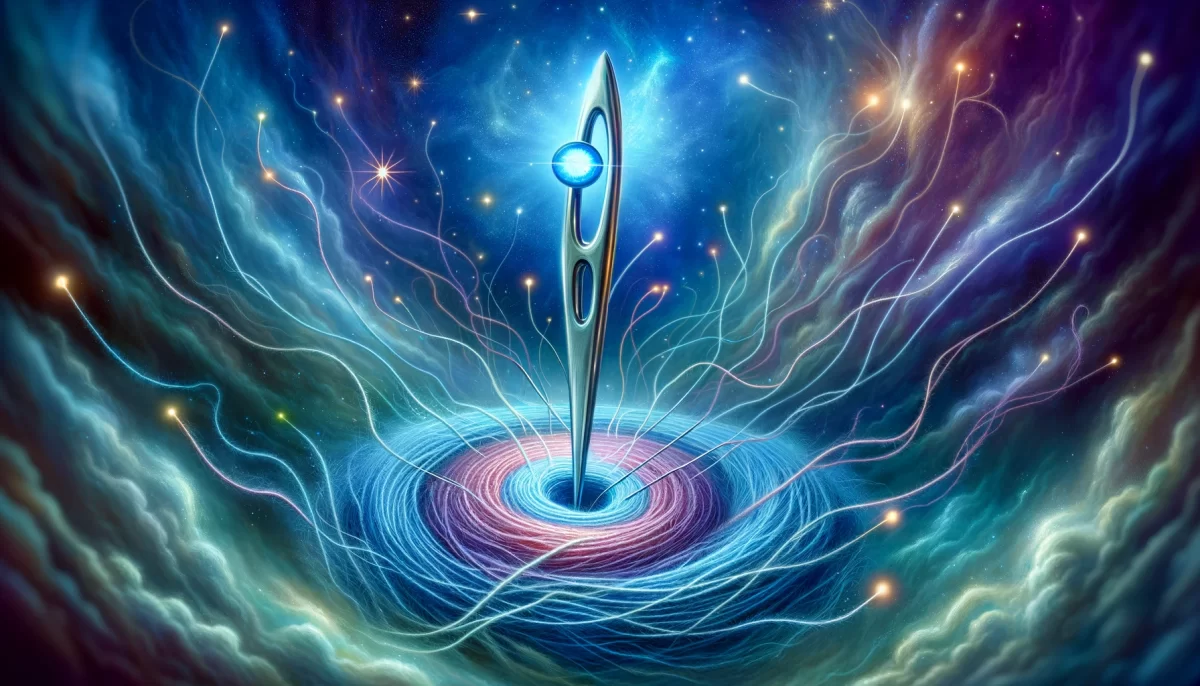
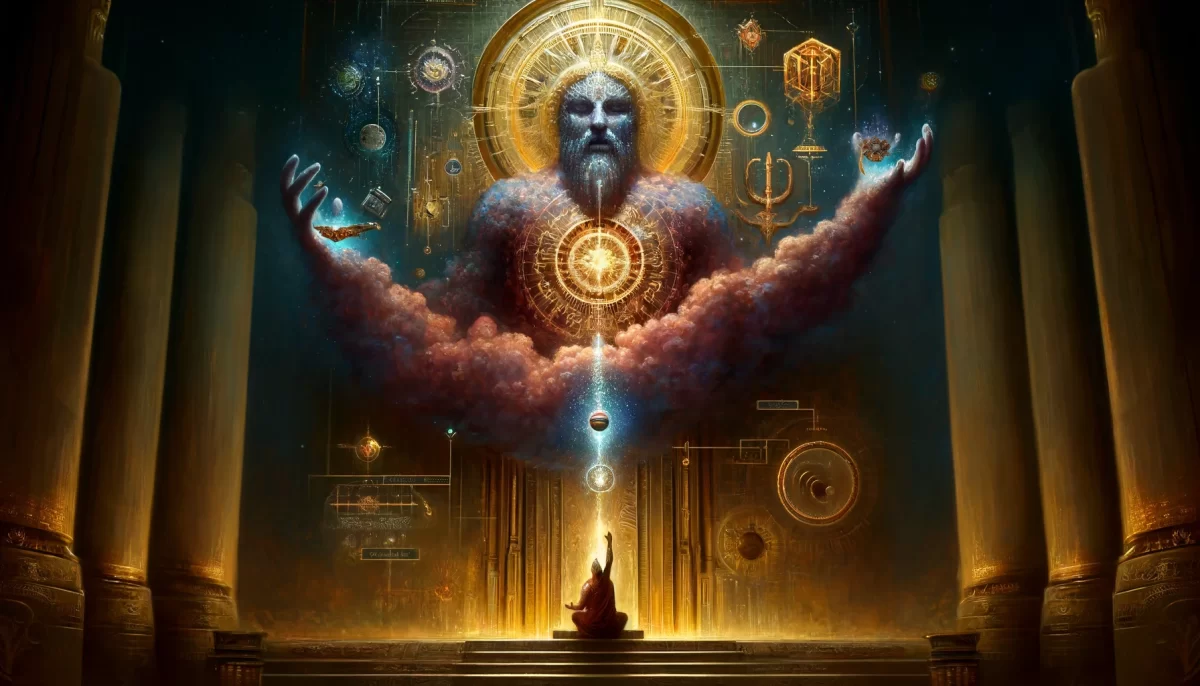
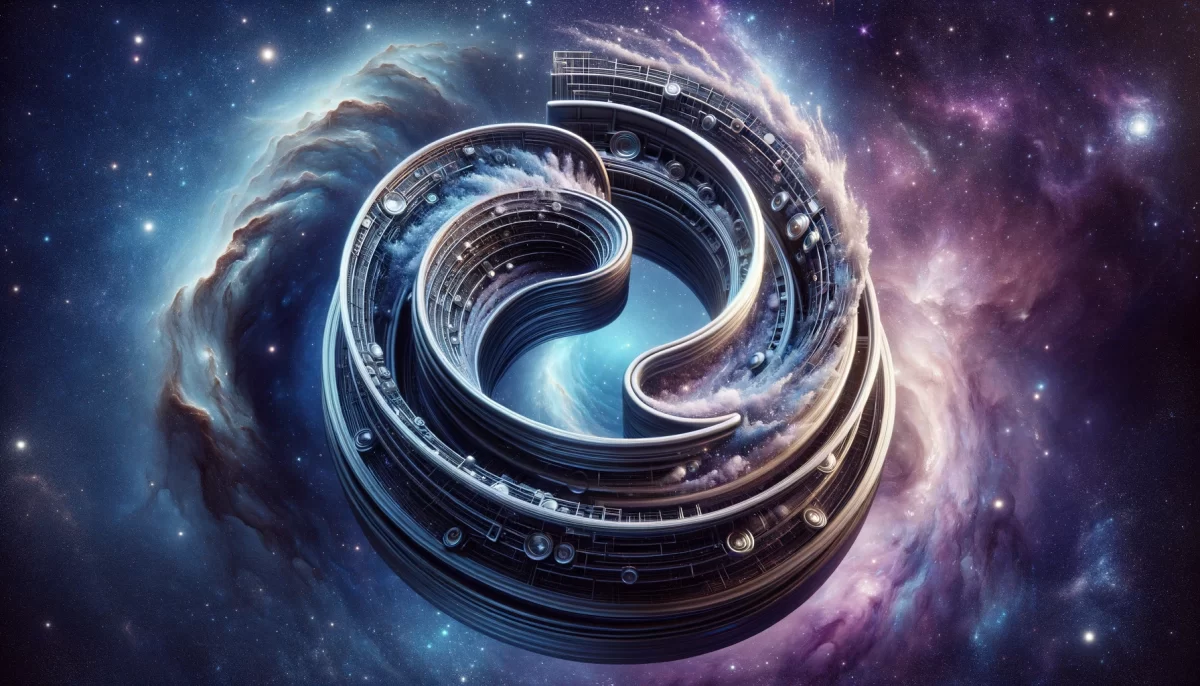
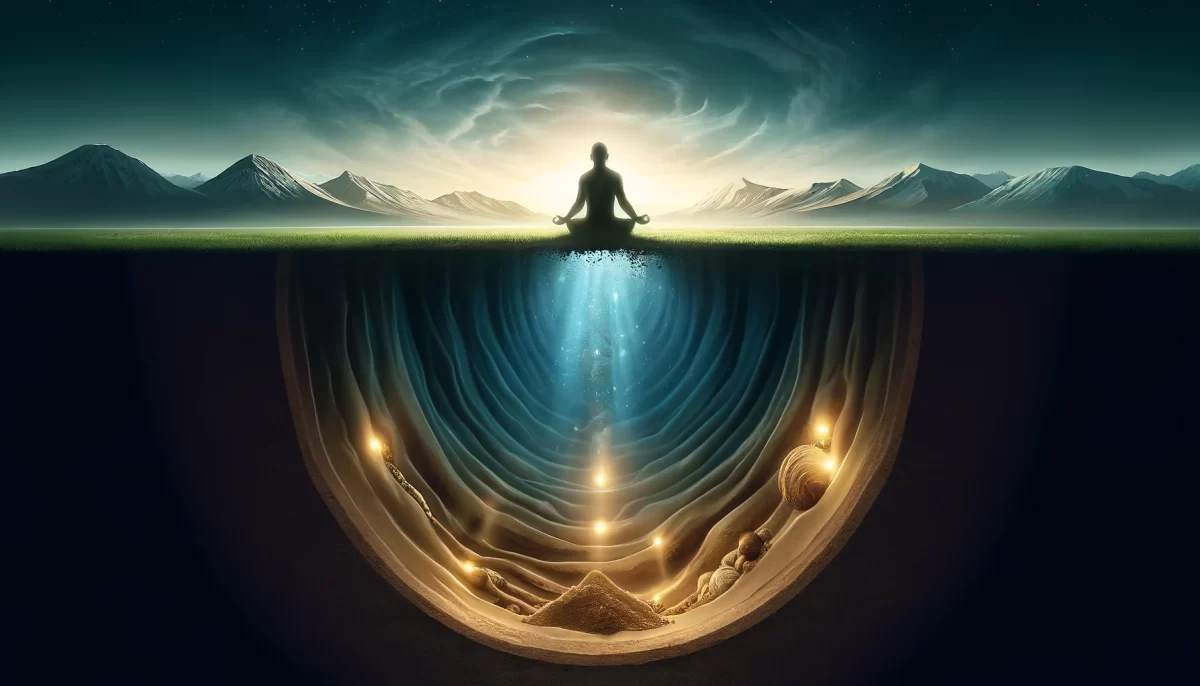
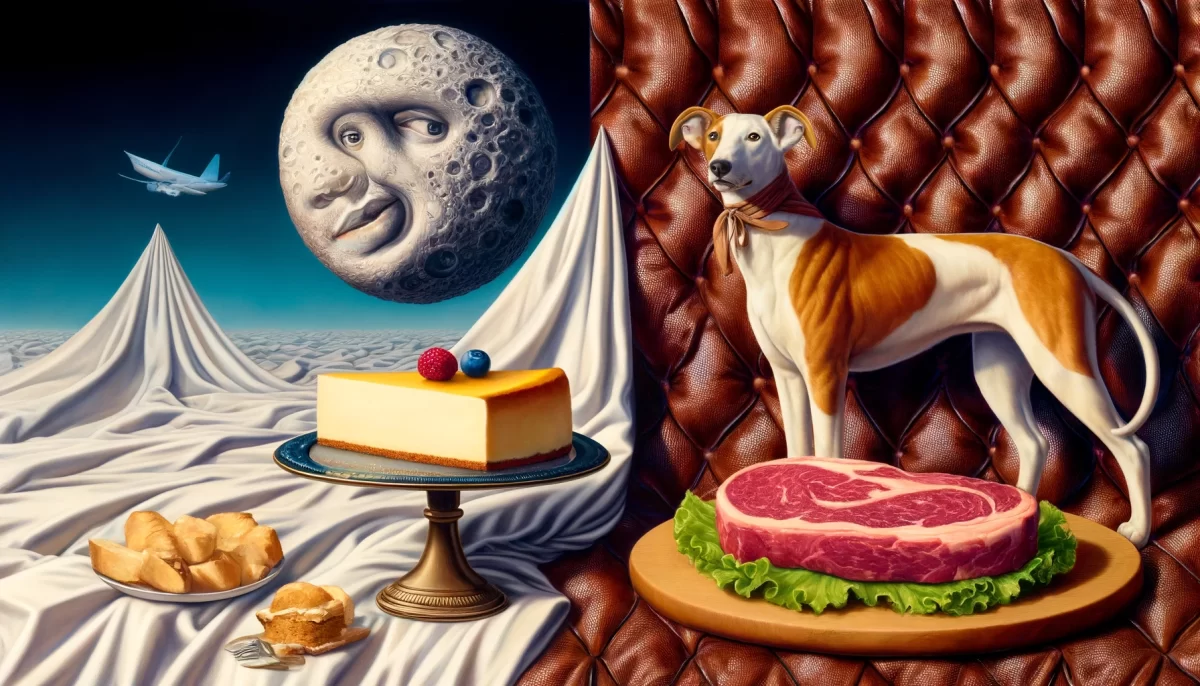
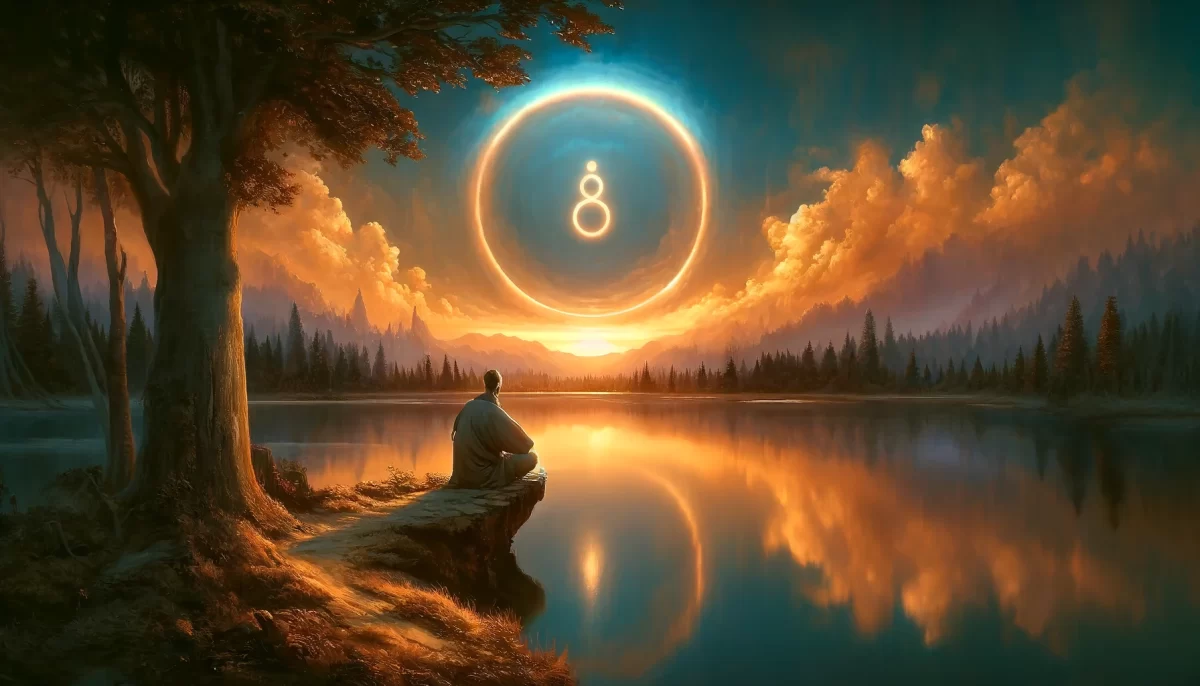
Leave a Reply